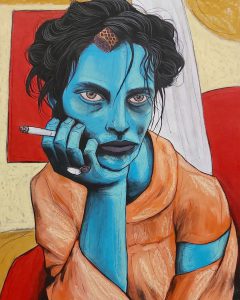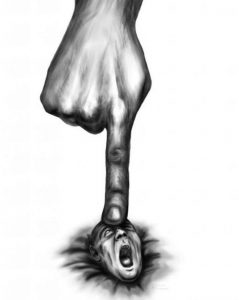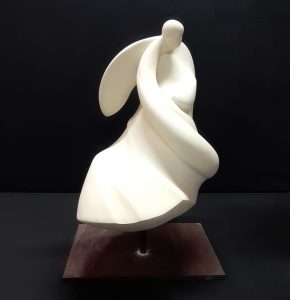
Rubáiyát of Omar Khayyam with an authentic translation by Edward Fitzgerald on Zigguart
Amir Houshang Aghamiri is a Persian miniature artist born in Karaj in 1971. His professional artistic activity is started officially in 1990 when he becomes a member of the association of the Iranian painting. He has a first degree in art in Expert in Hadicrafs from Sura University in 1997 in Teheran. The winner of the UAE International Festival in 2008, and the Algerian International Festival in 2010, Amir Houshang Aghamiri is a researcher and author of 12 volumes of educational books on traditional Iranian and Islamic art. Robaiyat of Omar Khayyam is an exquisite book with an authentic translation by Edward Fitzgerald and a Book design and editing by Amir Houshang Agha Miri.
Omar Khayyam (18 May 1048 – 4 December 1131) was a Persian polymath, mathematician, astronomer, philosopher, and poet. He was born in Nishapur, in northeastern Persia, and was contemporary with the rule of the Seljuks around the time of the First Crusade. As a mathematician, he is most notable for his work on the classification and solution of cubic equations, where he provided geometric solutions by the intersection of comics. Khayyam also contributed to the understanding of the parallel axiom. As an astronomer, he designed the Jalali calendar, a solar calendar with a precise 33-year intercalation cycle that provided the basis for the Persian calendar, which is still in use after nearly a millennium. There is a tradition of attributing poetry to Omar Khayyam, written in quatrains(Rubáiyát or Robayiat). This poetry became widely known to the English-reading world in a translation by Edward FitzGerald (Rubáiyát of Omar Khayyam, 1859), which enjoyed great success in the Orientalism of the fin de siècle.
This volume in Persian Nastaliq script with English translation “Frontpage” accompanied by an introduction by Karim Zamani has been published in five colors and now is available on Zigguart.com for sale. The Nastaliq is one of the calligraphic hands used to write the Perso-Arabic script in the Persian and Urdu languages, and traditionally the predominant style in Persian calligraphy. It has developed in the land of Persia (modern-day Iran) in the 14th and 15th centuries. It is sometimes used to write Arabic language text (where it is mainly used for titles and headings), but its use has always been more popular in the Persian, Urdu, and Turkic spheres of influence.

Nastaliq remains very widely used in Iran, Afghanistan and Pakistan, and other countries for written poetry and as a form of art. A less elaborate version of Nastaliq serves as the preferred style for writing in Kashmiri and Urdu, and it is often used alongside Naskh for Pashto. In Persian, it is used for poetry only.
Nastaliq is the core script of the post-Sassanid Persian writing tradition and is equally important in the areas under its cultural influence. The languages of Iran (Western Persian, Azeri, Balochi, Kurdi, Luri, etc.), Afghanistan (Dari Persian, Pashto, Turkmen, Uzbek, etc.), India (Urdu, Kashmiri, etc.), Pakistan (Urdu, Punjabi, Saraiki, Pashto, Balochi, etc.) and the Turkic Uyghur language of the Chinese province of Xinjiang, rely on Nastaliq.

The book consists of 72 quatrains (Rubáiyát) that their authenticity has been approved by renowned Khayyam Persian scholars such as Dr. Foroughi and Dr. Nodooshan. Each illustration is in harmony with the content of own poems, which floats the audience in the ocean of meaning and imagination. In other words, the accompanying drawings of each page correspond to the abstract concept of its quatrain (No duplicate painting can see in the book). The calligraphic
arrangement is in the form of Nastaliq, written by Master Vahid Ahmadzadeh, whiles a few pages are written in the form of Chalipa to remove the boredom of repetition from the reader’s eyes. Chalipa is a panel in the Nastaliq script. Chalipa consists of four diagonal hemistichs of a poem, which have a moral, ethical, and poetic theme.
This exquisite work will be offered to you with a softcover, along with a Cardboard box craft in four different colors and designs.









